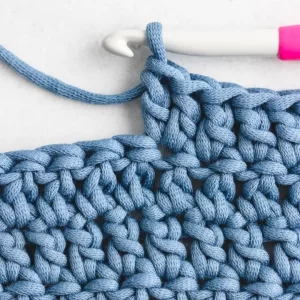Embroidery floss, with its delicate strands and vibrant colors, is a beloved material for many crafters. However, choosing the right crochet hook for this fine thread can be a bit tricky. This guide will help you navigate the world of crochet hook sizes and find the perfect match for your embroidery floss projects.
Understanding Crochet Hook Sizes
Before diving into specific hook sizes for embroidery floss, let’s clarify the different sizing systems. Crochet hooks primarily use millimeters (mm) and steel hook sizes.
- Millimeters (mm): This system is common worldwide and measures the hook’s diameter in millimeters. Smaller numbers mean smaller hooks.
- Steel hook sizes: This system is more traditional, especially in the United States. The numbers increase as the hook size decreases.
It’s essential to understand these systems to accurately choose the right hook for your project.
Factors Affecting Crochet Hook Choice
Several factors influence the ideal crochet hook size for embroidery floss:
- Desired fabric weight: Do you want a delicate, lacy fabric or something sturdier?
- Number of strands: Embroidery floss typically comes in six strands. Using all six creates a thicker yarn, while using fewer strands results in a thinner one.
- Crochet stitch: Different stitches require varying hook sizes. For instance, tighter stitches might need a smaller hook.
- Personal preference: Ultimately, your comfort and desired outcome play a significant role.

Recommended Crochet Hook Sizes for Embroidery Floss
While there’s no one-size-fits-all answer, here’s a general guideline:
- For delicate lace or fine crochet work: Use a crochet hook between 0.5mm and 1.0mm. This is ideal for using one or two strands of embroidery floss.
- For slightly thicker fabrics or amigurumi: A 1.5mm to 2.0mm crochet hook works well. You can use two to four strands of floss.
- For sturdier items like coasters or small blankets: Opt for a 2.5mm to 3.0mm hook. Using four to six strands of floss will give you the desired thickness.
Remember, these are just starting points. Experimentation is key to finding the perfect hook size for your specific project.
Tips for Choosing the Right Crochet Hook
- Start small: If you’re unsure, begin with a smaller hook and gradually increase the size if needed.
- Consider the project: The intended use of the finished item will influence your hook choice.
- Test different hook sizes: Don’t be afraid to experiment with various hooks to find the one that works best for you.
- Gauge swatch: Create a small swatch to assess the fabric’s appearance and feel before starting your project.
Common Crochet Hooks for Embroidery Floss
Several types of crochet hooks are suitable for embroidery floss:
- Aluminum hooks: These are lightweight and affordable, making them a good option for beginners.
- Steel hooks: Known for their durability and precision, steel hooks are excellent for detailed work.
- Bamboo hooks: Offering a comfortable grip, bamboo hooks are gentle on the hands.
Ultimately, the best hook type depends on your personal preference and the specific project.

Troubleshooting Common Issues
- Loose stitches: If your stitches are too loose, try a smaller hook or increase the number of floss strands.
- Tight stitches: A larger hook or fewer floss strands might help if your stitches are too tight.
- Splitting floss: Using a higher-quality floss or being gentle with the yarn can prevent splitting.
Crochet Projects with Embroidery Floss
Embroidery floss offers endless possibilities for crochet enthusiasts. Here are some popular project ideas:
- Doilies and lace: Create intricate and elegant doilies using delicate crochet stitches.
- Amigurumi: Make adorable stuffed animals and characters with embroidery floss for detailed features.
- Jewelry: Design unique and stylish jewelry pieces, such as bracelets, necklaces, and earrings.
- Home decor: Crochet coasters, pot holders, and other decorative items to add a touch of handmade charm to your home.
Additional Tips:
- Hook care: Clean your crochet hooks regularly to prevent yarn build-up and maintain their performance.
- Stitch tension: Consistent stitch tension is essential for achieving even fabric.
- Practice makes perfect: The more you crochet with embroidery floss, the better you’ll become at choosing the right hook and creating beautiful projects.

Insights from experienced crocheters
Crochet, like any craft, is a journey filled with learning and growth. Experienced crocheters have accumulated valuable knowledge and techniques over the years. Let’s delve into some of their insights to help you elevate your crochet skills.
Understanding the Basics
- Master the foundation: Building a strong foundation is crucial. Perfecting basic stitches like chain stitch, single crochet, half double crochet, and double crochet will make tackling more complex patterns easier.
- Gauge is key: Consistent gauge is essential for accurate project measurements. Practice creating gauge swatches to determine the correct hook size and tension.
- Read the pattern carefully: Understanding the pattern before starting is vital. Take your time to analyze the stitch abbreviations, instructions, and diagrams.
Tips for Crochet Success
- Yarn selection matters: The right yarn can make a world of difference. Consider factors like fiber content, weight, and thickness when choosing yarn for your project.
- Hook harmony: The hook size should complement your yarn. Experiment with different hook sizes to achieve the desired fabric.
- Ergonomics matter: Prevent hand pain by using ergonomic crochet hooks and maintaining a comfortable posture.
- Practice makes perfect: Consistent practice is the key to improvement. Don’t be afraid to experiment with different stitches and patterns.
- Join the crochet community: Connect with other crocheters through online forums, social media groups, or local crochet clubs. Sharing knowledge and experiences can be invaluable.
Stitch markers
Selecting the right crochet hook for embroidery floss is crucial for achieving your desired results. By understanding the factors influencing hook size, experimenting with different options, and practicing regularly, you’ll master the art of crocheting with this versatile thread. So, grab your embroidery floss, choose your hook, and let your creativity flow!


